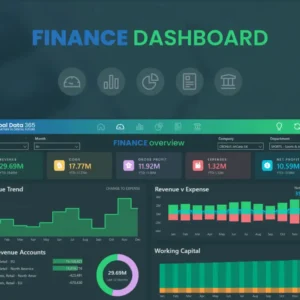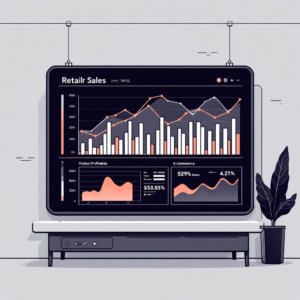In today’s globalized and interconnected business landscape, supply chain visibility and risk management are critical for the success and resilience of any organization. The ability to monitor and analyze supply chain data in real-time can help businesses identify potential disruptions, optimize operations, and make informed decisions. Power BI, a leading business intelligence and data visualization tool, offers a comprehensive solution for supply chain visibility and risk management. In this blog, we will explore the capabilities of Power BI in transforming supply chain management, mitigating risks, and enhancing overall efficiency.
The Importance of Supply Chain Visibility and Risk Management
- Enhanced Visibility: Supply chain visibility provides organizations with a clear understanding of their entire supply chain, from raw materials to end customers. It enables better tracking, monitoring, and management of inventory, shipments, and production.
- Risk Mitigation: Identifying and mitigating risks in the supply chain is crucial to prevent disruptions and maintain business continuity. Risks can arise from various factors, including geopolitical events, natural disasters, supplier issues, and demand fluctuations.
- Operational Efficiency: A well-managed supply chain with real-time visibility allows for streamlined operations, reduced lead times, and optimized inventory levels.
Empowering Supply Chain Visibility with Power BI
- Real-time Data Analysis: Power BI connects to various data sources, such as ERP systems, logistics platforms, and IoT devices, providing real-time data analysis. Supply chain managers can access up-to-date insights for informed decision-making.
- Interactive Dashboards: Power BI’s interactive dashboards and reports offer a comprehensive view of the supply chain, enabling users to drill down into specific data points and uncover actionable insights.
- Data Visualization: Power BI’s data visualization capabilities present complex supply chain data in a visually appealing and easy-to-understand format, making it accessible to stakeholders across the organization.
Improving Risk Management with Power BI
- Predictive Analytics: Power BI’s integration with predictive analytics tools allows organizations to forecast potential supply chain risks and take proactive measures to mitigate them.
- Alerts and Notifications: Power BI can be configured to send alerts and notifications when specific risk thresholds are reached, enabling timely responses to potential disruptions.
- Scenario Planning: Power BI’s “what-if” analysis feature enables scenario planning, allowing organizations to assess the impact of different risk scenarios on the supply chain and devise contingency plans.
Case Study: A Success Story
Explore a real-life case study where an organization leveraged Power BI for supply chain visibility and risk management, leading to increased efficiency and risk mitigation.
Transforming Supply Chain Management with Power BI
- Data Consolidation: Power BI allows organizations to consolidate data from multiple sources, providing a unified view of the supply chain.
- Collaboration: Power BI’s cloud-based platform facilitates collaboration among supply chain stakeholders, promoting seamless communication and decision-making.
- Mobile Accessibility: Power BI’s mobile app enables on-the-go access to critical supply chain insights, empowering users with real-time information anytime, anywhere.
Conclusion
Power BI empowers organizations to achieve supply chain visibility and effective risk management, enabling them to proactively address challenges and seize opportunities. With real-time data analysis, interactive dashboards, and predictive capabilities, Power BI enhances operational efficiency and resilience in the ever-evolving supply chain landscape. Embrace the power of Power BI and transform your supply chain into a competitive advantage.







